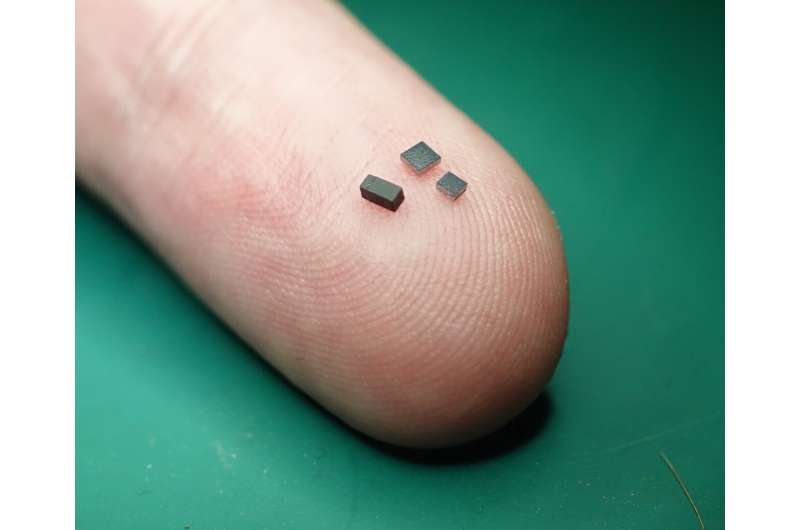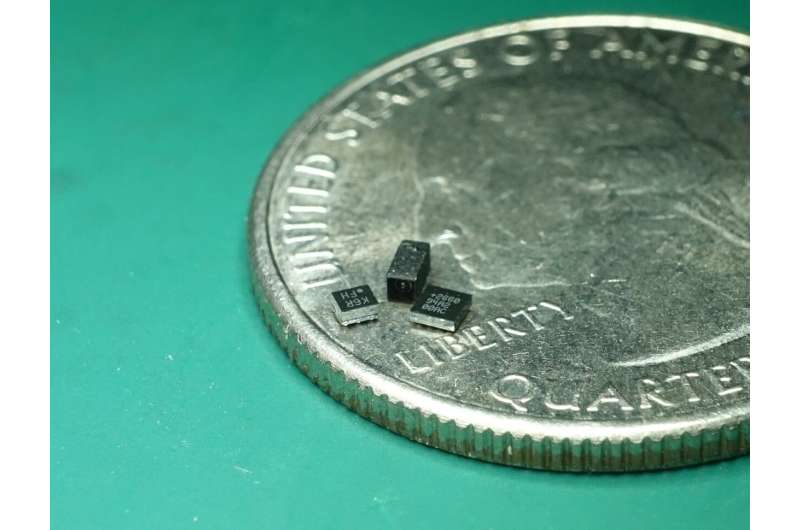December 13, 2022 feature
A gyroscope-free system to efficiently control the flight of insect-size robots

Light-weight and flying robots the size of small insects could have highly valuable real-world applications, for instance supporting search & rescue missions, inspections of hazardous sites, and even space exploration.
Despite their potential, the realization of these robots has so far proved difficult, particularly due to technical issues encountered when trying to stabilize their flight and artificially replicate the innate hovering capabilities of insects.
Researchers at University of Washington have recently developed a flight control and wind sensing system that could help to tackle this challenging robotics problem, finally enabling the stable flight of robots even as small as a gnat. This system, introduced in Science Robotics, is based on the use of accelerometers, a sensor that can measure the acceleration of any moving device, object or body.
"For almost 40 years, roboticists and microfabrication experts have been dreaming about creating 'gnat-sized' robots just a few milligrams in weight—first proposed by Anita Flynn at Berkeley," Sawyer Fuller, one of the researchers who carried out the study, told TechXplore.
"She and Rodney Brooks later wrote the entertaining paper, 'Fast, cheap, and out of control: a robot invasion of the solar system,' that proposed sending tiny robots out to explore the solar system, also known as 'smart dust.' Such robots would be much smaller than the 100-mg, bumblebee-sized robot called the UW Robofly, which students in my lab have created so far."
In recent years, many roboticists worldwide have been trying to create actuation systems for insect-sized robots weighing 10 mg or less and many succeeded, including researchers Berkeley University and the Army Research Labs. Reliably stabilizing and controlling the flight of these incredibly small robots, however, has so far proved to be problematic.
"As a rule, small flapping-wing robots and drones are unstable without feedback control," Fuller explained. "If you turn on the wings or rotors, they quickly tumble out of the sky. Flies are believed to compensate by using gyroscopic halteres as feedback. So, an obvious solution would be to add a gyroscope to the robot design."

While the integration of gyroscopes could theoretically help to overcome technical issues associated with the flight of small flying robots, the gyroscopes available today are nowhere near as light or efficient as they would need to be to fly on such light devices. The lightest gyroscope developed to date weighs 15mg, which is 5mg more than the weight of an entire gnat-sized robot.
"Our proposed solution to this problem originated from my Ph.D. dissertation, where I found that flies use a sense of wind from their feather-shaped antennae to control their flight," Fuller said. "We showed in this paper that you can do what flies do, measure airspeed, using a different type of sensor, an accelerometer. The big benefit is that accelerometers are inherently much smaller and more efficient than gyroscopes. They are available off-the-shelf in a package weighing just 2 mg."
In addition to being far lighter than gyroscopes, when accompanied with good models of robot dynamics, accelerometers can also help to estimate the in-flight tilt angle of robots. In their design, Fuller and his colleagues also included an equally light optic flow sensor, and a tiny microprocessor, to also estimate a robot's altitude and the strength of the wind.
"When we compared a simulated response of our system to a gust of wind with how fruit flies respond to the same gust, we found that the two systems behaved quite similarly," Fuller said. "So now we have an interesting hypothesis about insect flight control to test. Namely, that flying insects that do not have gyroscopes, like bees and moths, might be able to stabilize their unstable flight dynamics by sensing wind with their antennae. "
Fuller and his colleagues tested their system in both simulations and real-world experiments using a 30-gram robot and found that it could successfully stabilize its flight, allowing it to replicate the flight dynamics of fruit flies. In the future, they hope that it will be applied and tested on many other flying robots, including lighter robots weighing 10 mg or less.
"We were able to create a stabilizing flight control system based on off-the-shelf parts that is small enough for a gnat-sized robot," Fuller added. "Our system could also be adapted for larger robots, such as the 100 mg UW Robofly, allowing more payload to be devoted to a larger battery or other sensors. In our next studies, we plan to demonstrate it flying on the UW Robofly."
More information: Sawyer Fuller et al, A gyroscope-free visual-inertial flight control and wind sensing system for 10-mg robots, Science Robotics (2022). DOI: 10.1126/scirobotics.abq8184
© 2022 Science X Network


















